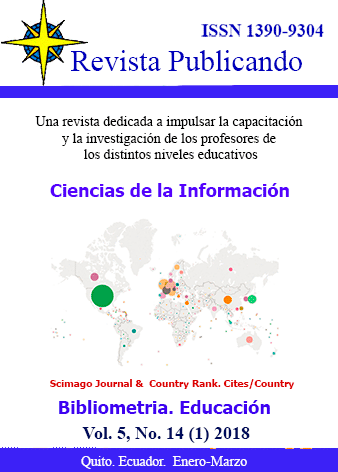Resumen
The changes in values and attitudes in Iran are considered to be in a positive direction concerning the relationships and interactions of boys and girl before marriage. In this area, boys are more accordant with these kinds of relationships than girls. This study aimed to determine the relationship between emotional intelligence, honesty; impulsivity and compatibility with a desire for a relationship with the opposite sex. The target population in this study is all single people (male and female) of Shahre- Kord city, ranged between 13-18 years, 250 subjects of unmarried people of Shahre- kord city, ranged between13-18 years of age were chosen, randomly. They were divided into four groups of people who have relationship with boys, have relationship with girls, have no relationship with girls, and have no relationship with boys. The relationship between each of the variables emotional intelligence, honesty, impulsivity and compatibility were measured with a desire for a relationship with them. Analysis of data with correlation coefficient indicated that there is a significant difference between honesty, impulsivity and compatibility with a desire for a relationship with the opposite sex but there is no significant difference between emotional intelligence and relationship with the opposite sex. Therefore, checking these items and providing appropriate solutions in this area can lead to improvement in healthiness of male and female relationships.
Referencias
Andrea Lorenada Costa, Eglacy C. Sophia, Cíntia Sanches, Hermano Tavares, Monica L. Zilberman.(2015). Pathological jealousy: Romantic relationship characteristics, emotional and personality aspects, and social adjustment. Journal of Affective Disorders, Volume 174, 15 March 2015, Pages 38-44.
Andrea Lorenada Costa, Eglacy C. Sophia, Cíntia Sanches, Hermano Tavares, Monica L. Zilberman.(2015). Pathological jealousy: Romantic relationship characteristics, emotional and personality aspects, and social adjustment. ”¢ Journal of Affective Disorders, Volume 174, , Pages 38-44.
Asadi A. The investigation of heterosexual relationships among Ardebil's universities. J Ardabil Univ of Medical Sci 2006; 6(2): 113-4. [In Persian].
Bar-On, R. (2000). Emotional and social intelligence: Insights from the Emotional Quotient Inventory (EQ-i). In R. Bar-On & 3. D. A. Parker (Eds.), Handbook of emotional intelligence. San Francisco: Jossey-Bass.
Britney M. Wardecker, William J. Chopik, Margaret P. Boyer, Robin S. Edelstein.(2016). Individual differences in attachment are associated with usage and perceived intimacy of different communication media. Computers in Human Behavior, Volume 59, 18-27.
Marin,B.V.Coyle,K.K.Gomez,C.A.Carvajal,S.C.& Kirby,D.B.(2000). Older boyfriend and girlfriends increase risk of sexual initiation in young adolescents, journal of adolescent Health 27,pp.409-418.
Donald F. Sacco, Savannah J. Merold, Joyce H.L. Lui, Christopher J.N. Lustgraaf, Christopher T. Barry.(2016). Social and emotional intelligence moderate the relationship between psychopathy traits and social perception. Personality and Individual Differences, Volume 95, June 2016, Pages 95-104.
Elisabeth Engelberg, Lennart Sjí¶berg. (2004). Emotional intelligence, affect intensity, and social adjustment. Personality and Individual Differences, Volume 37, Issue 3, August 2004, Pages 533-542.
Florsheim, P.(2003). Adolescent Romantic relations and sexual behavior. Publishers Mahwah, new jersey, London, pp. 57, 60.
Ghafari GR Interactions and social values of Iranian youth. Youth Stud 2008; (8&9): 7-32. [In Persian].
Gharabaghi, H., Garoosi, M. T. (2009). Relationship between five personality traits and job satisfaction in Tabriz Tractor making factory. Journal of Shahid Chamran University psychological finding. 4 (2), 113-128. (in Persian)
Heller D, & et al, 2004, The role of person versus situation in life satisfaction: a critical examination, Psychol Bull, v. 130 (4), p. 574-600.
Mayer, J. D. Salovey , P. Caruso, D. R & Sitarenios, G. (2001). Emotional Intelligence as a standard intelligence, Emotion, 1, 232-242.
Michaud,P.A.Suris J.C.&.Deppen,A.(2006).Gender-related psychological and behavioural correlates of pubertal timing in a national sample of Swiss adolescents,Molecular and cellular Endocrinology,Vol 254-255,25.172-178.
Mousavi-Lotfi, M., Akbari, V. & Safavi, M. (2009). Why Emotional Intelligence. Qum: Qum University of Medical Sciences Press.
Movahed M, Enayat H, Abasishozi, MT. The study of relationships between social cultural factors and attitude toward heterosexual relationships before marriage. J Soc Sci and Humanit of Shiraz Unive 2006; 24(2): 147- 65. [In Persian].
S.M. Nightingale, S. Roberts, V. Tariq, Y. Appleby, L. Barnes, R.A. Harris, L. Dacre-Pool, P. Qualter.(2013). Trajectories of university adjustment in the United Kingdom: Emotion management and emotional self-efficacy protect against initial poor adjustment Learning and Individual Differences, Volume 27, October 2013, Pages 174-181.
Watson, D. (2000). Mood and Temperament. New York: Guilford.
Usted es libre de:
Compartir — copiar y redistribuir el material en cualquier medio o formato
Adaptar — remezclar, transformar y construir a partir del material
La licenciante no puede revocar estas libertades en tanto usted siga los términos de la licencia
Bajo los siguientes términos:
Atribución — Usted debe dar crédito de manera adecuada, brindar un enlace a la licencia, e indicar si se han realizado cambios. Puede hacerlo en cualquier forma razonable, pero no de forma tal que sugiera que usted o su uso tienen el apoyo de la licenciante.
NoComercial — Usted no puede hacer uso del material con propósitos comerciales.
CompartirIgual — Si remezcla, transforma o crea a partir del material, debe distribuir su contribución bajo la lamisma licencia del original.
